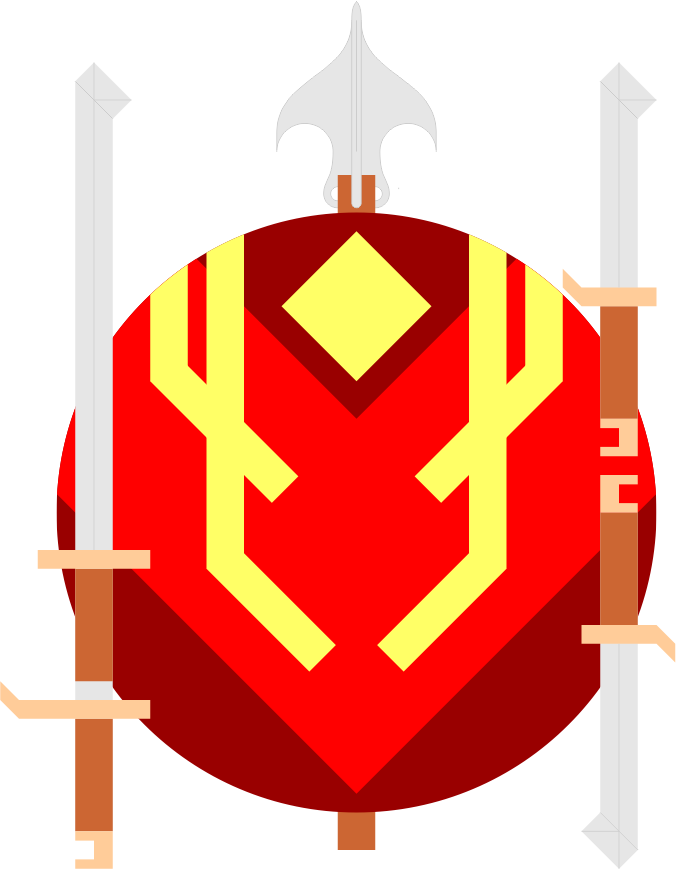Tartagloam Rout
The Tartagloam Rout was a devastating defeat for the heretofore victorious Grand Army 2nd Air Fleet in the aftermath of the Siege of Tartagloam. It represented a major and rare Voxelian defeat in their conduct of the War of Reunification, forcing the country to reconsider its interests in the region for years thereafter.
The Conflict
Deployment
"Pioneer" Auto-Armor units with the Coalition Defense Forces' 3rd Mobile Division brought experimental surface-to-air missiles in in an attempt to break Grand Army air support over Tartagloam. Aquila Combat Autogyros from the nearby Commonwealth holding of Alvastead then swept in, cleaning up GAV autogyros still in the area and forcing the GAV ortillery and parasite carriers high into the atmosphere to avoid destruction themselves.
This was a major turning point in the momentum of the siege, as CDF forces had driven a wedge between attacking GAV forces and their logistics trains. The nearest GAV bases were on Medial F4, and other elements of the CDF had mobilized in an effort to outflank the GAV ground forces now assaulting the outer districts of the city. Calculating that a total collapse of the siege was iminent - the Voxelian doctrine of lightning attacks was ill-equipped for situations involving defense-in-depth, the only viable option against the incoming heavily-armored Pioneers to the rear and reinvigorated local defense forces at the front - the GAV ground command issued the order to scatter before the incoming CDF units could 'close the trap.'
For its part, the 2nd Air Fleet sought to escape to Southern H via the Inflection Layer. Fortunately for them, night was falling and, subsequently, they were able to extinguish their running lights and use the cover of darkness to conceal their retreat. Unfortunately for them, the CDF 1st Air Corps was angry and prepared to make an example of the GAV 2nd Air Fleet. After some initial confusion, the 1st CDF gave chase, eventually encountering the 2nd GAV over Southern H.
Conditions
By the time the 1st GAV had entered Southern airspace, it was already extremely dark; the moon was new, leaving the aurora australis to provide the only light in the cool late-spring sky. It was only because of keen observations by 2nd CDF spotters wearing infrared-equipped Concertina Support Auto-Armor that the 1st GAV was able to be detected on their retreat at all. These spotters gave the 2nd CDF units in the air information about the 1st GAV's heading, allowing the assets to intercept the fleeing 1st GAV despite poor visibility.
The Engagement
Thinking that they had successfully evaded the CDF defenders, the 1st GAV settled to low altitude over Southern H4 to perform repairs and plan for a return to Voxelian airspace. The route through Southern A would not be a good choice, as the adjacent West F cube layer was all ocean and, thus, the Commissure to Voxelian-held Western C was not traversible. An encrypted RadNet communique was sent from the fleet to the Navigator's Guild seeking a solution to the issue, as the fleet's own contracted Navigators had, as required by Guild dictates regarding political neutrality, left their service as soon as the fighting had started.
Whilethe 1st GAV was awaiting a response, the pursuing 2nd CDF forces discovered them from above, as the surrounding woody hills had not proven as concealing as the 1st GAV had hoped from an airborne threat. The 2nd CDF began jamming radio communications nad opened fire with ortillery before the the 1st CDF could react.
Nearly half of the gathered Voxelian air assets within the first five minutes of fighting, and the "Knave" Fast Attack units which the GAV had deployed to clear landing sites were scattered into the dark woods by the intensity of the bombardment. Outgunned and unable to ascend very far due to the press of CDF fire overhead, the 1st Air Fleet scattered, hoping to divide the attention of the attacking CDF. Every remaining GAV autogyro and auto-armor unit was deployed, leaving only skeleton crews aboard the airships if possible, to maximize the chance of escape or a successful repulsion of the attack. Some airship captains stopped or ran their dieseltech engines on significantly reduced power to minimize their infrared signatures in the hopes that, in the dark, their airships would remain undetected; other commanded full-throttle in the hopes of moving before the next volley of ortillery could land.
This set of decisions ultimately saved many Voxelian lives, as the 1st Air Fleet lost almost half of its aerostat assets in the Southern Tesseract over the course of the next several hours despite the actions of their captains. Over the next four days, the CDF forces hunted the fleeing GAV units until the CDF themselves began to run low on fuel and ammunitions. Temporarily cut off from Voxelian support, the scattered 1st GAV elements made no efforts to contest the CDF presence in Southern H, instead opting to get as much as their own forces out of the area as quickly and quietly as possible so as not to turn the rout into a complete catastrophe.
Outcome
Some GAV stragglers left in Southern H after the attack ultimately got lost and were either captured or succumbed to exposure and injuries sustained in the attack. Most, however, eventually made their way to the primitive commissure transit station station leading to the adjacent Southern A cube layer. There, emerging from the commissure into a shallow lagoon in the Nacreous Archipelago, the survivors comandeered the RadNet transciever tower of the nearby Burning Hearts Social Club resort to call for extraction. Escorts from the Grand Army 3rd Air Fleet escorted the remainder of the 1st GAV back to allied territory without further incident.
Conflict Type
Battle
Start Date
30 Irsten, 9970 AR
Ending Date
3 Abirsten 9970 AR






Nice article! I think my favorite part was how the victors accidentally brought about future trouble from the Garbage Man. Interesting way to develop things.